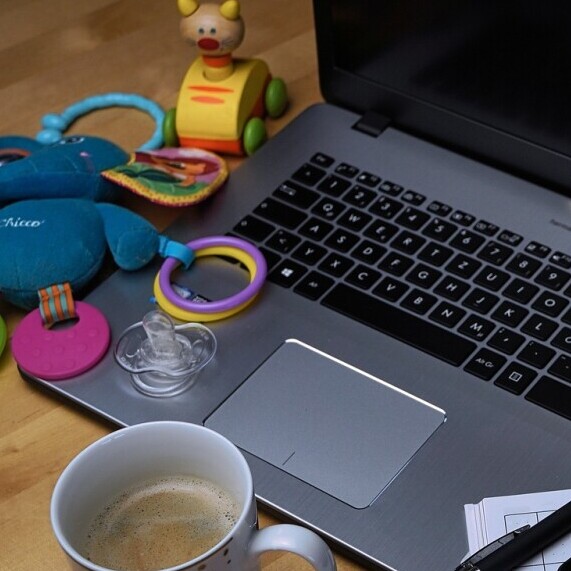 Work-life balance is more than just a trendy buzzword. It’s about finding that sweet spot where you’re able to effectively manage your job responsibilities while also getting the most out of your personal life. In our fast-paced world, being clear about where work ends, and life begins can make a world of difference.
Work-life balance is more than just a trendy buzzword. It’s about finding that sweet spot where you’re able to effectively manage your job responsibilities while also getting the most out of your personal life. In our fast-paced world, being clear about where work ends, and life begins can make a world of difference.
The modern work environment, with its ever-present emails and flexible working hours, can sometimes blur these lines. And guess what? Not everyone realizes when they’ve gone off the balance rails. Burnout and stress might sneak up on you, affecting not just your work but also your mood, your relationships, and even your health. Noticing red flags early – like fatigue, anxiety, or irritability – can save you a lot of trouble down the line.
trouble down the line.
Statistics don’t lie. Studies show that individuals with poor work-life balance face increased risks of health issues, both physically and mentally. It’s not just about logging in more hours; it’s about the quality of those hours, both at work and away from it. Chronic stress from always working can lead to burnout, and that impacts productivity in a massive way.
Making sense of these observations showcases how crucial it is to prioritize creating a balanced lifestyle. Knowing the stakes and recognizing the signs can motivate you to take active steps toward a healthier and happier work-life dynamic.
Strategies for Building a Healthy Work-Life Balance
 Creating a work-life balance isn’t a one-size-fits-all deal. It’s about figuring out what works best for you and sticking to it. One key approach is establishing clear boundaries. This might mean shutting down work emails post-office hours or carving out specific time slots for personal activities.
Creating a work-life balance isn’t a one-size-fits-all deal. It’s about figuring out what works best for you and sticking to it. One key approach is establishing clear boundaries. This might mean shutting down work emails post-office hours or carving out specific time slots for personal activities.
Time management is your best friend when it comes to maintaining balance. Techniques like the Pomodoro Technique or time-blocking can keep your productivity levels high without overworking yourself. Organized time means more time for the things you love.

Technology can be both an asset and a hindrance. While apps and tools can streamline tasks and communications, they can also tether you to work 24/7. Being conscious of this balance and opting for tech that supports your goals, not disrupts them, can be a game-changer.
Flexibility at work is another crucial component. It could transform how you handle everyday tasks. Flexible working hours or remote work opportunities allow you to better accommodate personal commitments and lead a more balanced life.
Creating a Supportive Work Environment
Companies have a huge role to play in encouraging work-life balance. A supportive work culture doesn’t just boost morale; it enhances productivity too.
One of the key factors is fostering a culture that genuinely cares about employee well-being. When you feel valued, you’re more motivated and engaged. Employers can lead by example, demonstrating respect for work-life boundaries themselves.
Employee support programs like mental health days, wellness resources, or even team-building activities can go a long way. These aren’t just perks—they’re essentials for maintaining balance.
A transparent and open communication channel between employees and management encourages feedback and ideas. It means having the freedom to express concerns about workload, flexibility, or anything affecting your work-life vibes.
Policies that support flexible working arrangements, such as telecommuting or adjustable shifts, are invaluable. These enable employees to tailor their schedules in a way that works best for them.
In the end, a supportive work environment is a partnership. When employers and employees collaborate to create these environments, everyone wins.
Personal Well-being: Tips for a Happier Life
Achieving a balanced work-life dynamic doesn’t stop at the office or in employer policies. It’s personal too. Ensuring your well-being means taking time to focus on yourself, whether it’s mentally, physically, or emotionally.
Self-care isn’t a luxury. It’s a necessity. Taking time for yourself isn’t selfish; it’s essential. Simple acts like meditating, journaling, or just decompressing after a busy day can bolster your mental health.
Physical activity is another cornerstone of maintaining balance. Whether you’re an early morning jogger or a weekend hiker, keeping your body moving can improve mood and reduce stress.
Relationships outside of work matter just as much. Connecting with friends, family, and communities can provide a strong support network, contributing to a more fulfilling life.
Finding hobbies and interests that bring joy can enrich your personal life. Whether it’s painting, playing an instrument, or exploring new cuisines, these activities make life colorful.
Creating personal goals, not tied to work or career, offers a sense of achievement and purpose. This could be learning something new or even setting aside quality time for self-reflection.
A harmonious work-life balance is holistic. It’s about nurturing every aspect of your life and continuously seeking ways to live more joyfully.
